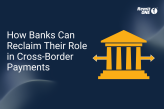Video: New Tech in an Old Business – The new products redefining the best in class. September 14, 2021

Continuing our recent discussions exploring some of the challenges and opportunities being faced by the remittance sector in these uncertain times, RemitONE hosted a webinar on the 23rd of June 2021 regarding the new products that are currently redefining best in class practices and the technology that drives them. The panel was made up of experts from both RemitONE and our friends and partners in other global companies. In case you missed the webinar, here is a summary of the key insights.
Webinar moderator:
Oussama Kseibati, Head of Services at RemitONE
Panellists:
- Walter D’Cruz, Director at Moneo Solutions and CEO at Livil Ltd
- Stone Atwine, Founder at CEO at Eversend
- Nelson Irizarry, Co-Founder and Chief Operating Officer at Paykii
What new technological advancements are now being utilised in the traditional remittance industry?
Walter: I was really looking forward to answering this one because I believe a lot of technological advancement is being driven by external forces like the regulators, banking partners and the market. For me, it’s about who adopts the technology faster and the technology I’m talking about specifically is regulatory technology like ID verification, KYC transaction monitoring, open banking, instant payments, digital payments, digital banking, artificial intelligence and, of course, blockchain. For me, those are the main drivers. The challenges companies are facing, however, largely stem from the ever-evolving beast that is compliance and the costs associated with it. A lot of fin-techs out there are reducing that cost whilst providing excellent services and as we move through this new environment, traditional remittance companies are going to have to play a big game of catch-up.
We know that regulation and fraud are the biggest challenges in the industry. What new tech is out there to overcome these challenges?
Stone: Regulation is a big pain, especially for those of us trying to upgrade across multiple countries on the African continent. Being a new-age player, we tried to do everything electronically and what we’ve seen in the software we use for everything from onboarding and compliance to KYC and anti-money laundering is that there are some major advantages the traditional players might not have noticed. For example, it helps us with integration and analytics so you can figure out if you’ve got 30 thousand or 50 thousand customers and how many of those customers did KYCs. In terms of fraud, we’re seeing many interesting solutions too. We’ve built a tonne of fields internally in Eversend alongside a new technology that allows you to spot potential fraudsters from their email address, phone number or even the gadget they’re using across different applications. I think the thing that really changes the game though is the ability to do all the required KYC diligence remotely without actually being close to the customer. We’ve seen improvements in liveness checks, for example, so that when somebody signs up on their telephone you can take a short video selfie and the technology now can figure out if this person is who they say they are.
Oussama: It’s also about customer experience; the better we have these solutions in place, the quicker it is for you to onboard someone not needing to be there. So they are on their mobile phone and take their picture and all the checks are done instantly so you can onboard them right there and then.
What have traditional remittance companies had to do differently as a result of this new technology?
Walter: You can’t replace a physical asset like cash; you have to go through to the digital world which offers a simple way of banking and topping it up with cash. Look at some of the challenger banks like OneZone where you can top up to £300 or £500 a month in cash. You go to a top-up agent, put your money in and it’s in your account within minutes. The cash economy is working right now still because there are older generations looking at crypto and digital currencies right now the way generations before looked at credit cards – with nothing but disbelief and trepidation. But there will come a time when cards are replaced by instant payment and there needs to be a roadmap in place to help these customers understand the new normal.
How do you see the utility bills payment sector in relationship with the MSB space, post-pandemic?
Nelson: Everyone has bills to pay. You’re talking about 40 billion payments a year based on households around the world and that’s just looking at basic utility services. Anywhere between 20% to 30% of funds that are being sent by remittance are being used specifically for bill payment services. I think the question we have to ask is who’s going to pay for it? Is it the sender or the recipient? From PayKii’s perspective, we actually play both sides of it. Our platform is a global digital platform with one API integration and we offer both domestic and cross border services in over 30 countries. But cross border bill payment is really our bread and butter. Because people want the ability to pay bills directly back home, either for control, security or peace of mind. There are three key challenges with bill paying in a cross-border context. The first one is awareness as most individuals do not know they can pay bills back in their home countries for themselves or for their loved ones. The second is commitment, which involves getting them to understand what is the value or bill payment by creating a more holistic view of managing the customer. The third challenge is regulatory fees but it’s slightly different from the regulatory challenge you’ll face in the money transfer world due to how different countries regulate bill payments.
Do you consider that the new adoption of technologies like blockchain may play a major role in both regions or are they typically regional focused?
Walter: I think they are going to be very regionally focused. If you look at Africa, there are certain countries where there’s been significant adoption of crypto often relating to their existing currency. In Nigeria, for example, example, there’s been 80% adoption. So it’s not about boiling the ocean here we have to really focus on corridors and where there’s a supporting regulatory framework. As far as blockchain is concerned, I think blockchain means so many different things to so many people and it’s often misinterpreted or misrepresented. For me the application of blockchain is not just about the value of an asset or funds; it is a complete 3D picture that you can build around a transaction.
Do you think that Cryptocurrencies can be a solution to solve settlement problems for intra-Africa cross-border remittances?
Stone: At Eversend we’re already using stable coins to move value across different studios based in different African countries. You really need to move values pretty quickly, especially if you aren’t going to have tens of millions tucked away in capital across different markets. We’re doing this internally though, so the customer doesn’t actually see anything to do with crypto or stable coins but we use them amongst ourselves to make sure that everything balances out in different countries. For these solutions to work we need modern systems as with old systems you’d have to use US transfer, which would take 3 to 5 days. That means we can reduce the amount of capital we need just by using this almost instant system of stable coins. I see the future of remittances going into stable coins, at least in the short term.
Customer loyalty can be a challenge in the remittance space. What new products and technologies should MSB’s consider to strengthen their relationship with the end-user?
Nelson: I’m not an expert in remittance space and I certainly can’t predict the future but what I will say is that where before you tended to have a lot of companies that were specifically focused on remittance, over the past few years fintechs have broadened everyone’s horizons. They have forced everyone to look at remittances in a slightly different way. So, the question is, what can dedicated remittance companies do to retain customers when the dynamics of the industry have changed so much and so rapidly? I think the first thing is to look at the customer holistically and ask how you can best manage that person’s financial health. Beyond helping them send money home, what else of value can you provide to help them manage their financial health?
Stone: We’re doing a lot of things internally around retention and one of those things comes back to little everyday payments. The idea is that to keep people coming back you give them the ability to quickly buy something like phone credit and bundle that in with a lot of other relevant financial services, giving them more value and more reason to stay. We also have a measure we call the “care factor” and this is essentially a measurement of the virility of our app through people telling their friends about Eversend. We try to ensure that every user is going to lead us to at least one other new user and this is done with the incentive of referral rewards so the inviter and the invitee both get a small amount of money when the invited person becomes a paying customer. We’re essentially giving our marketing budget directly to our consumers and it seems to be working.
We also know that bank de-risking is a major challenge for many businesses. What technological innovations exist to overcome this challenge?
Walter: You can’t really overcome the challenge of having a physical connection to a bank. No tech can achieve that. However, regulatory technology can de-risk your relationship with the bank by staying ahead of the game. Unfortunately, you’re never going to avoid de-risking until money businesses fully get behind PSD2, which for some reason they still seem quite reluctant to do. All you can really do is manage your volumes and cultivate banking relationships specific to the vertical markets you are going to operate in. Because certain banks will have the systems in place to focus on a certain corridor, whereas other general banks may not. The major challenge for banks is that they are typically rendered moribund by legacy systems – old IBM apps that they developed in the 70’s and 80’s that are still running some of their core business applications. So for them to adopt newer technology is very difficult because it doesn’t fit into their workflow. That’s where fintechs comes into the equation because we know what we’re doing with new technology. The problem, however, is that fintechs lack the trust of established banks and this is something that’s going to require greater collaboration. Until that happens, de-risking is just going to be a matter of doubling up, or tripling up, or spending a lot more effort in managing your relationships. But certainly being ahead of the game in terms of compliance and KYC gives you a big advantage.
We have seen the rise of everything from blockchain to instant payments and mobile money in recent years. But what changes are we going to experience in the next five or ten years?
Stone: What I see as the future of remittances and finance as a whole is some kind of central location from which somebody can get all of their financial service needs met. So if you’re sitting in a cafe in Paris and have to pay your grandmother’s electricity bill in Uganda, the platform that you use should be the same platform from which you pay your Amazon or Netflix bill. What we are seeing is that amalgamation of financial services I think that’s really going to be the future – all in one, borderless apps. You want to be able to offer more than just remittances, you want an app somebody can use to trade stocks and crypto and send money back home. The more touchpoints, the better!
Do you think the current regulatory frameworks welcome or stifle new technological innovations in the industry?
Nelson: Part of the issue is that regulators have bigger fish to fry and they rarely make the rules of the game clear, so to speak. So it poses a challenge for us depending on where the client is located and operating. Bill paying is a small ticket item that I think most regulators just haven’t thought about, which leaves us specifically in a rare position where we can move ahead but we have to do so cautiously as we can never be 100% sure if or when the regulators will suddenly decide we’re a concern. When you want to make sure you are crossing your t’s and dotting your i’s, it’s hard when that’s not the primary focus of the regulators themselves. But I guess that allows wiggle room for playing around, testing boundaries and seeing what works. And as always, working with consultants who are very good in the remittance space can make sure you understand the stadium that you’re playing in, if not the game itself.
Walter: It honestly depends on where you are as there’s no such thing as consistency. You’ve all no doubt seen the recent events in China and the impact that has had on the price of crypto. The biggest impact on the market in terms of innovation is going to be the introduction of central bank digital currencies because in a way that’s going to really legitimise their use. Then of course you have open banking, which is definitely going to happen on a wider scale. I think the advent of digital currencies will push open banking. They go hand in hand, after all.
What next?
Now that you’ve read our article we want to help you get the most out of it and deep dive into the trends and predictions shared.
Tap into our experts and schedule a free consultation.
Related Posts
-

How to Build a Leaner, Smarter Money Service Business in 2025
In an era of rapid regulatory change, rising customer expectations, and digital disruption, how can money service businesses (MSBs)—companies that…
May 22, 2025 -

Trump’s Threats to Cross-Border Payments: What It Means for Your Business
It’s been a short while since Trump stormed back into office, and he’s already shaken things up with his hard-hitting…
May 22, 2025 -

Unlock Faster, More Secure Payments with RemitONE’s Open Banking Solution
We’re excited to introduce the latest enhancement to our RemitONE Money Transfer Platform: the RemitONE Open Banking Solution. Competitively priced…
January 31, 2025 -

How to Expand Your SEND Operations in the UK and Europe—Without the Regulatory Hassle
The remittance market in Europe is valued at €133.7 billion annually, with the UK market contributing an additional £23 billion.
January 31, 2025 -

The Top 5 Cross-Border Payment Trends That Shaped 2024
What a year it’s been for the world of payments! From breakthroughs in tech to surprising shifts in consumer behaviour,…
December 19, 2024 -

How Banks Can Reclaim Their Role in Cross-Border Payments with RemitONE
Banks, once the cornerstone of international payments, are finding themselves sidelined. Senders and receivers have now joined forces, pushing banks…
December 18, 2024